Empowering through employee monitoring
The evolution of women in the workplace Women's success stories across industries Do more: 4 strategies to empowering women in the workplace 1. Break the bias 2. Ensure flexibility 3. Share internal goals and metrics 4. See the real leaders Bottom lineKey takeaways
Women in the workplace have made significant strides over the past century, with their participation in the labor force increasing steadily. Starting with 20.4% in the early 1900s, and going to 57.4% in 2019. Despite progress, gender inequality persists in executive leadership roles, where women at work make up only 28% of executives among the top 100 companies in the S&P 500, and a mere 9% hold the position of CEO. Flexible work arrangements play a crucial role in retaining female employees, with 20% of women citing flexibility as the primary reason for staying in their jobs. Furthermore, 38% indicated they would consider leaving if flexibility options were not available. Bias against women in the workplace remains a significant challenge, affecting the recognition of their contributions. However, employee monitoring can help address biases by providing objective data for evaluation and decision-making processes.We are WorkTime, a software company with 20+ years of expertise. Specializing in non-invasive employee monitoring and productivity tracking, we prioritize creating respectful work environments for all.
The evolution of women in the workplace
The study of women in the workplace history reveals the gradual evolution of gender roles and the challenges women have faced in various industries over time. According to the women in the workplace statistics, in the early 1900s, women comprised approximately 20.4% of the labor force in the United States, reflecting limited opportunities and societal norms. However, since then, there has been a notable upward trend. By 1948, women's labor force participation began to rise steadily, reaching a peak of around 60% in 1999. Despite a slight dip in subsequent years, the participation rate remained substantial, with 57.4% of women engaged in the labor force in 2019.In the early 1900s, women comprised approximately 20.4% of the labor force in the United States, reflecting limited opportunities and societal norms.
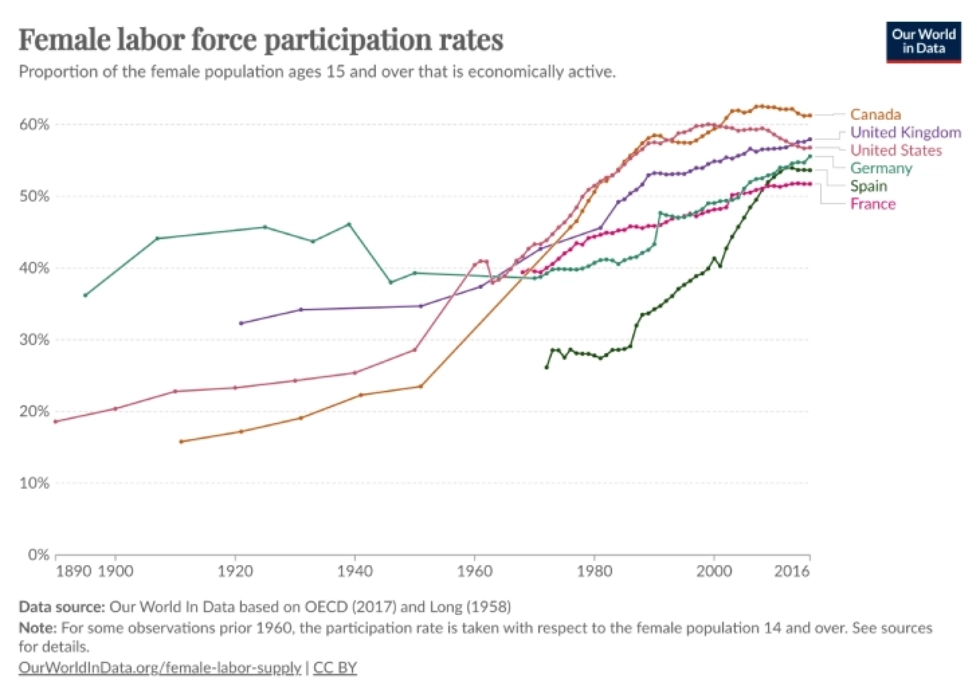
Source: Our World in Data
Concurrently, women's educational attainment has experienced remarkable progress. According to the research, in 1970, only 11% of women aged 25 to 64 held a bachelor's degree or higher. However, by 2019, this figure had surged to 45%, indicating a significant expansion of educational opportunities for women over the past five decades. Moreover, the proportion of women without a high school diploma has drastically declined from 34% in 1970 to just 5.4% in 2019, highlighting the strides made in educational accessibility and achievement. Women-owned businesses are not only crucial for economic growth but also reflect the increasing presence and impact of women in the workplace. Despite the progress made, gender inequality remains prevalent in executive leadership roles. Studies reveal that men are disproportionately represented, being 2.5 times more likely than women to occupy top leadership positions. Among the top 100 companies in the S&P 500, women at work make up only 28% of executives, and a mere 9% hold the position of CEO.Among the top 100 companies in the S&P 500, women make up only 28% of executives, and a mere 9% hold the position of CEO.
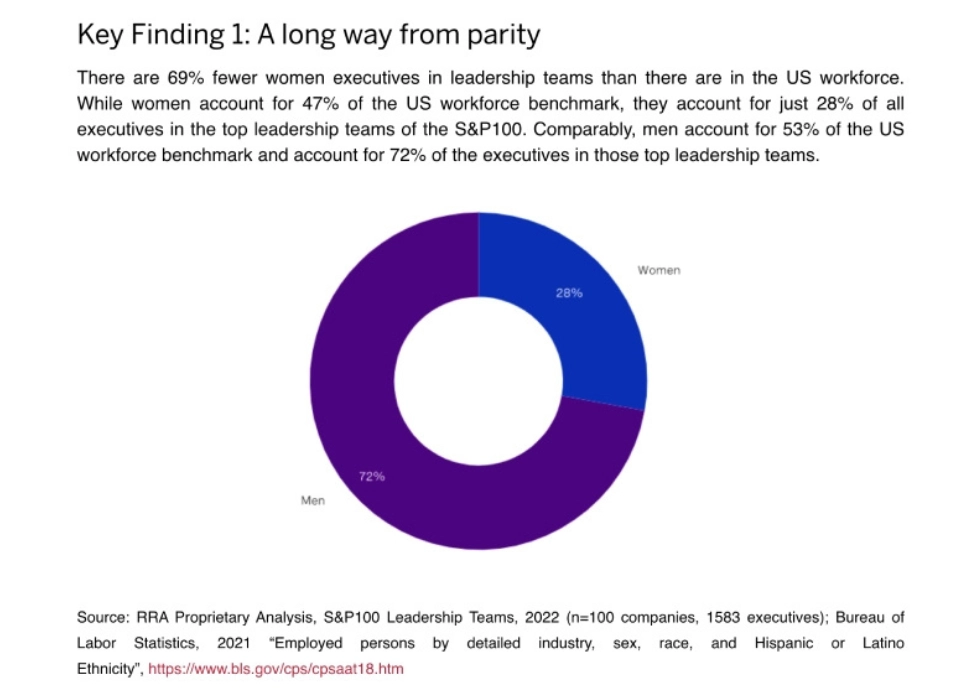
Source: Harvard Law School Forum on Corporate Governance
Addressing this gap requires reevaluating career paths and examining promotion practices for women in business, particularly women of color, at various stages of their careers. By prioritizing diversity and inclusion initiatives and fostering equitable pathways to leadership, you can cultivate a more representative and effective workforce, ultimately driving better financial outcomes and sustainable growth.By prioritizing diversity and inclusion initiatives and fostering equitable pathways to leadership, you can cultivate a more representative and effective workforce, ultimately driving better financial outcomes and sustainable growth.
Women's success stories across industries
Thanks to significant advancements, women across diverse industries are shattering barriers and accomplishing extraordinary feats. Business professional women bring a ton of expertise and leadership to their respective fields, driving innovation and success in today's dynamic business landscape. In this spotlight, we highlight three exemplary women. Women's dedication, innovation, and perseverance have propelled them to greatness in their respective fields, including IT, STEM, and unconventional domains traditionally not accessible to women.Women's dedication, innovation, and perseverance have propelled them to greatness in their respective fields, including IT, STEM, and unconventional domains traditionally not accessible to women.
Kate Maxwell
General Manager and Industry Lead, Microsoft Worldwide Education, Microsoft She is a tech industry leader, known for her strategic acumen and commitment to leveraging technology for organizational advancement. As a former Chief Technology Officer at Microsoft, Maxwell's expertise in digital transformation has left a lasting impact, while her advocacy for STEM diversity underscores her belief in equal opportunities.Katalin Karikó
A biochemist who specializes in ribonucleic acid-mediated mechanisms She is a pioneering figure in STEM, particularly in mRNA research. Her groundbreaking work at BioNTech paved the way for the development of transformative COVID-19 vaccines, inspiring future generations of biomedical researchers with her relentless dedication to scientific advancement.Marion Godwin
Static steam engine driver She defies stereotypes in an unconventional field as a static steam engine driver at Blists Hill Victorian Town. Her diverse responsibilities highlight her adaptability and commitment to preserving historical heritage, showcasing the transformative power of passion and perseverance.Do more: 4 strategies to empowering women in the workplace
Employee monitoring can serve as a tool in fostering equality and empowering women in the workplace. You can ensure that all employees are evaluated based on their actual performance by tracking various metrics such as productivity levels, active time, and attendance. This data-driven approach enables fair and transparent decision-making processes. Employee monitoring allows you to identify and address disparities in workload distribution, ensuring that opportunities for advancement and recognition are distributed equitably among employees of all genders. Nevertheless, it's important to emphasize that this approach should not be about control, but rather about respect. To empower your employees and achieve optimal results, choose non-invasive employee monitoring techniques. This means refraining from intrusive methods like taking screenshots or video recording and instead focusing on respectfully tracking work progress.To empower your employees and achieve optimal results, choose non-invasive employee monitoring techniques.
1. Break the bias
What can still stand in the way of opening opportunities for women in the workplace? Bias against women at work often impedes the recognition of their contributions, while biases against remote work and flexible schedules hinder the creation of more comfortable work arrangements. However, these challenges can be addressed by relying on monitoring data. WorkTime offers reports on the productivity levels, active time, and attendance of both men and women in your team. After analyzing monitoring reports, you can make management decisions and promotions based on genuine results, thus avoiding reliance on stereotypes. Comparing productivity in-office versus remote work, also, can ensure that everyone remains focused on their tasks, even with flexible schedules.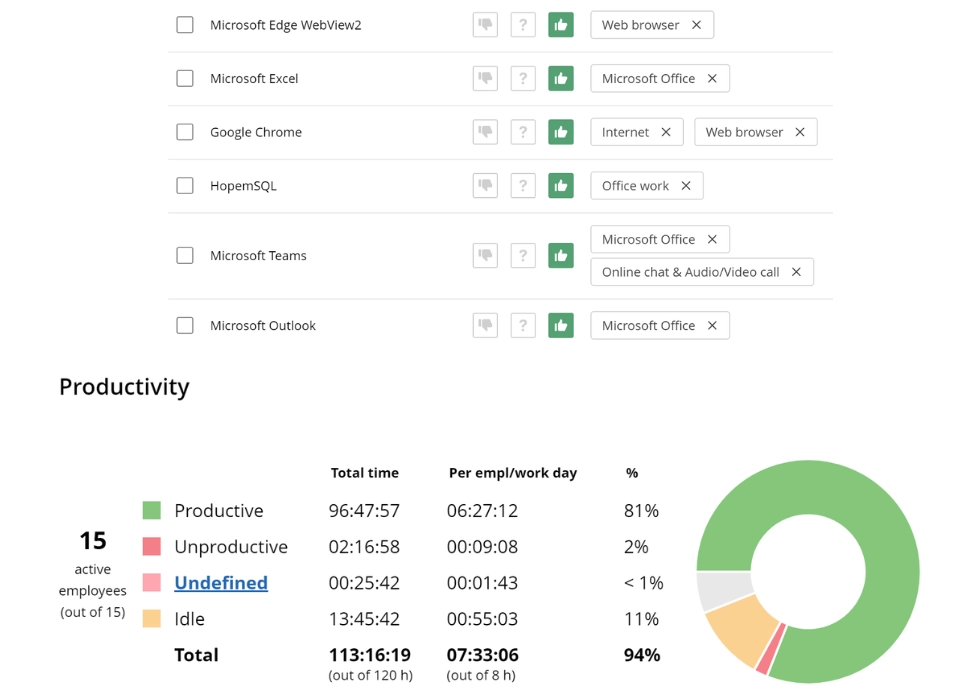
WorkTime offers reports on the productivity levels, active time, and attendance of both men and women in your team.
2. Ensure flexibility
Flexible policies empower women to balance their professional and personal responsibilities effectively. The research underscores the importance of flexibility in retaining female employees, with 20% of women highlighting flexibility as the primary reason for staying in their jobs, while 38% indicate they would consider leaving if flexibility options were not available. To ensure that women do not face barriers to advancing in their careers or fields of study, implement flexible policies to support them during various life stages, including:- Pregnancy
- Childcare responsibilities
- Remote work situations
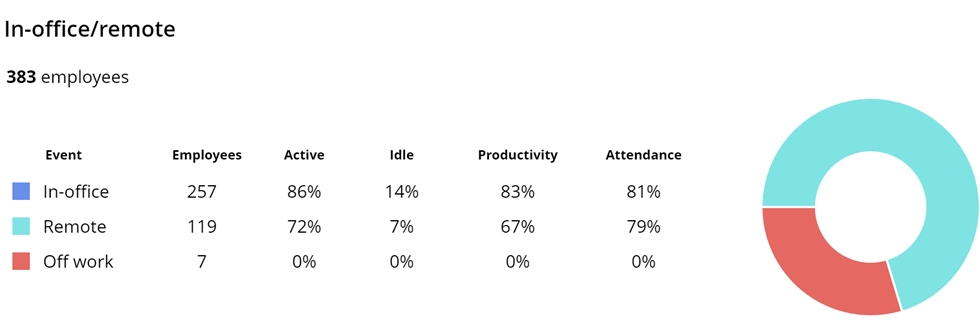
WorkTime offers a monitoring feature for both in-office and remote employees.
3. Share internal goals and metrics
Awareness is a potential tool for driving change within the company. When employees are informed about both opportunities and challenges at work, they become more engaged in finding solutions. Communicating performance expectations to female employees is key. Through WorkTime employee monitoring, you can establish clear productivity or active time goals and track the results in achieving them. Sharing these statistics with female employees can provide motivation and encouragement to meet these objectives.
Transparency with metrics sends a powerful message to employees from traditionally marginalized groups, indicating that they are valued and supported within the organization.Through WorkTime employee monitoring, you can establish clear productivity or active time goals and track the results in achieving them.
4. See the real leaders
Recognition creates a positive work environment, especially for women who may face additional challenges and barriers in the workplace. With employee monitoring, you get a real leaderboard based on employee performance, providing a tangible way to recognize and motivate female employees. The WorkTime leaderboard feature showcases the best employees based on productivity, attendance, active time, and distraction score, highlighting their contributions and achievements. Besides that, the ability to identify underperforming employees offers an opportunity for support and motivation. Whether it's offering training, providing a break, or offering work advice, employee monitoring gives you a chance to intervene proactively and help struggling women employees improve their performance and overall well-being.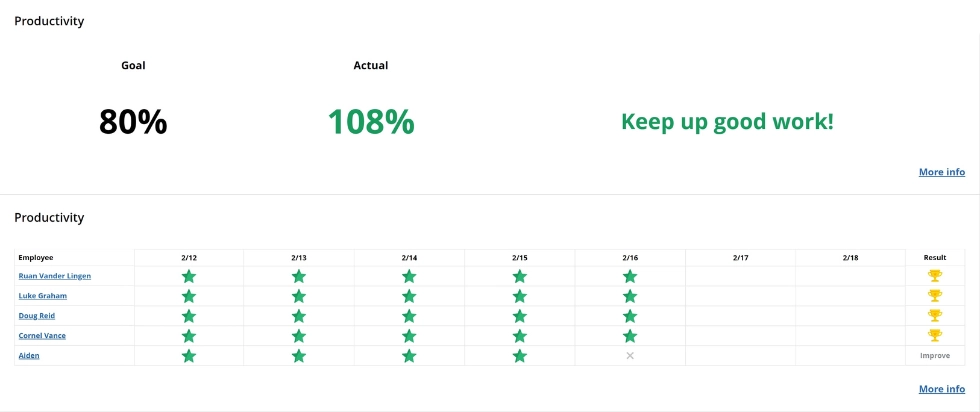
The WorkTime leaderboard feature showcases the best employees based on productivity, attendance, active time, and distraction score, highlighting their contributions and achievements.









